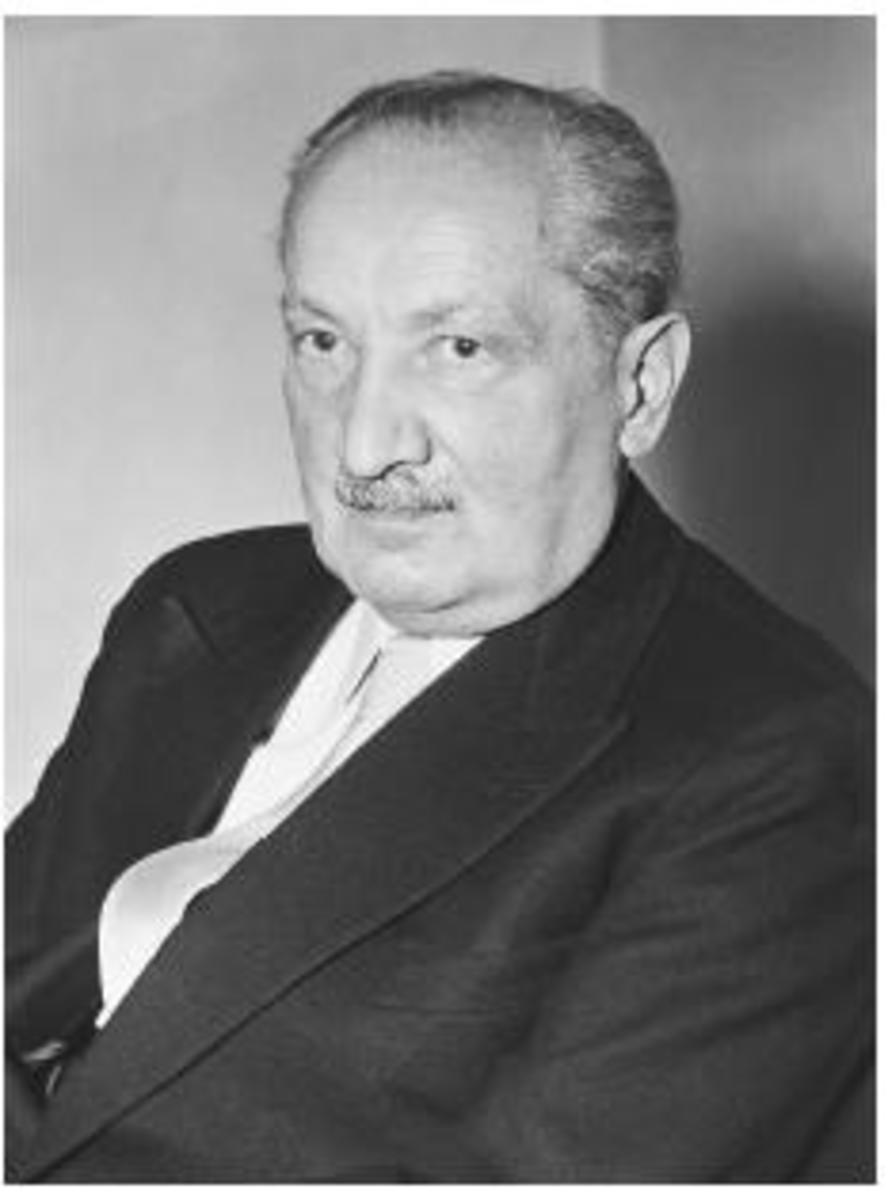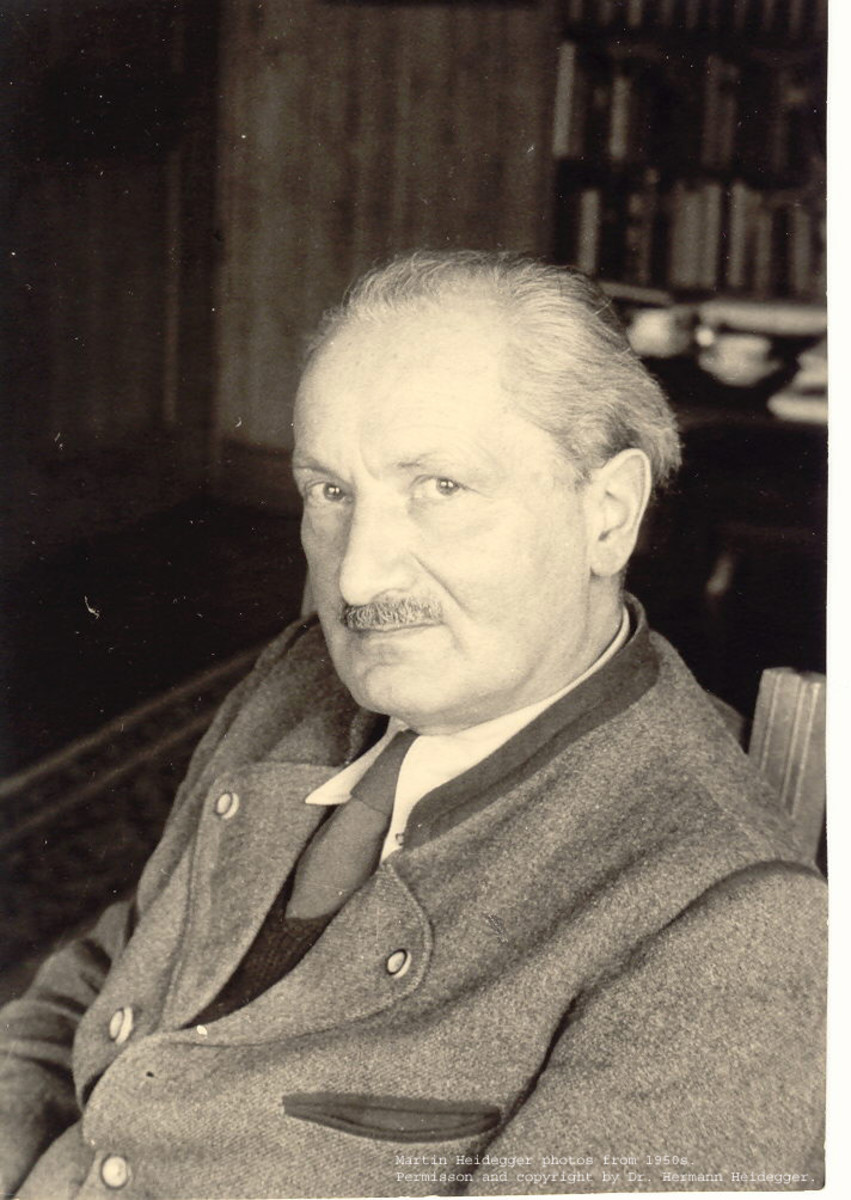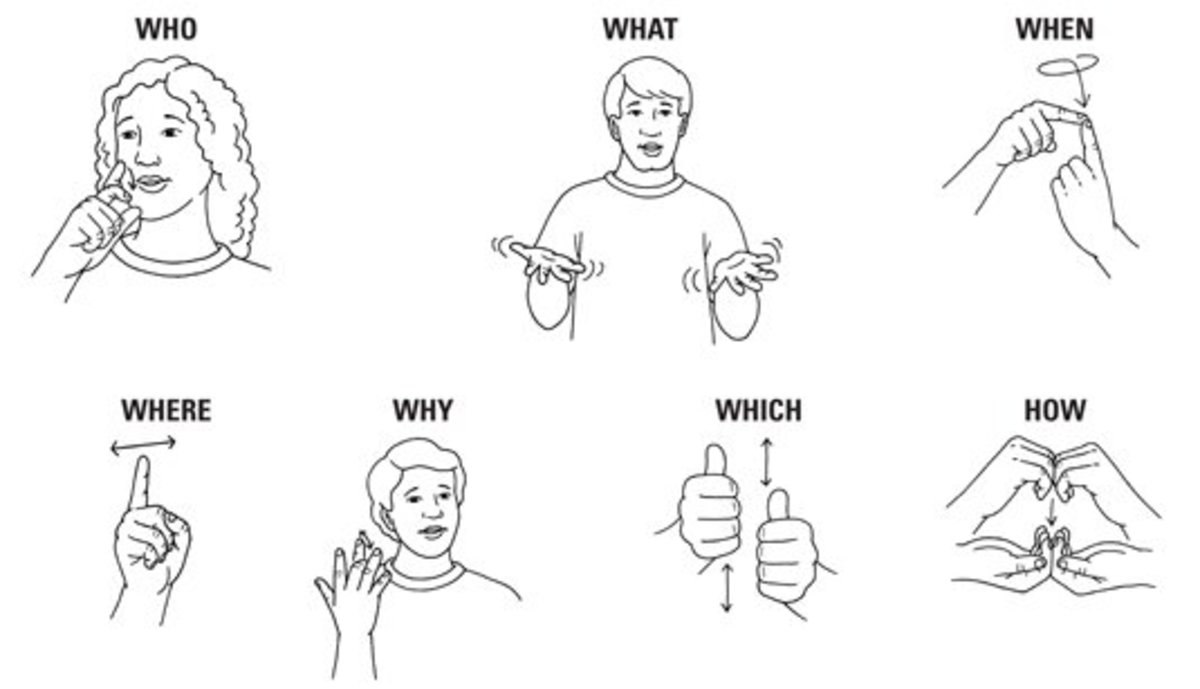Reading Machines
‘I am a little world made cunningly/ Of elements and an angelic sprite’ (“I am a Little World Made Cunningly” 1-2)
‘Since words are in no sense abstractions, but rather show the Being of that of which they speak’ (The Question Concerning Technology xx)

In the Introduction to The Slow Professor, Berg and Seeber state that ‘the push towards the easily quantifiable and marketable rushes us [professors and graduate students] into “findings,” and is at odds with [a] spirit of open inquiry and social critique’ (14). This use of the phrase ‘easily quantifiable’ is interesting in terms of the debates which continue to dog those looking to incorporate computational methods into appraisals of literary material. Here, the authors are referring to a cheapening of the work humanities scholars traditionally carry out due to pressure applied by corporatization of the university, and certainly there is a view that the literary propositions arrived at via tech are similarly vulgar (Fish 2012; Golumbia 2014). The common denominator is a familiar debate on the comparative merits of instrumental and conjectural knowledge production, and, more fundamentally, our perception of what truth looks like. Rather than continue to flog this particular dead horse, I would like to simply compare the kinds of reading performed by humans and computers. What is this reading privileged by traditional humanities scholars? Are the results produced by computational analysis as ‘easily quantifiable’ as many of its detractors would like to make out? Can these machine analyses even be called reading?
<SCRIPT LANGUAGE = "Javascript">
var today= new Date()
</SCRIPT>
....
<BODY onload=alert(today)>
In order for the above code to execute correctly, every character must be rendered and spaced exactly as they appear here. If everything is functioning, the following will appear in your browser:

If the code appears as follows, nothing happens:
<SCRIPT LANGUAGE = "Javascript">
var today= new Date()
<SCRIPT>
....
<BODY onload=alert(today)>
The processor arrives at the error and, even though it is confronted by a tangible set of meaningful symbols, is forced by the grammatical strictures of JavaScript to cease reading. The unfortunate machine is completely at the mercy of the programming language, unafforded any breadth of conjecture or the ability to fill in the blanks. Thus, computers are highly efficient and valued readers until they are not, and, while it is tempting to align the programming console with a kind of totalitarian space in which the subject symbol must carry out a very specific function at the risk of being rendered obsolete, it is in fact the society of symbols which becomes defunct on the omission/ speciousness of one. The pre-error text remains unrealized, while that after is simply unread. Units of language suffer collectively under the terms of programming, while the machine, whose very raison d’être is to read these symbols, is totally baffled by minute syntactical variation.
Is it possible to compare this impotence with the experience of reading a difficult passage of cultural theory? Here is an example from Heidegger’s Question Concerning Technology:
'Technology is not equivalent to the essence of technology. When we are seeking the essence of “tree,” we have to become aware that That which pervades every tree, as tree, is not itself a tree that can be encountered among all the other trees' (4).
What kind of “programming” is necessary to read this passage? Perhaps the JavaScript equivalent here is education, privilege, upbringing, environment, discipline or self-delusion. Although the human reader is not obliged to stop reading when encountering a phrase such as ‘the essence of technology,’ or even such a seemingly innocent word as ‘equivalent,’ there is certainly a sense, and particularly with the procedural logic of philosophy, that one may not progress accurately until each element of the text has been properly processed. Of course, many will plough on and undoubtedly profit intellectually from their experience, but can we really call this close reading? Isn’t the computer which halts every time it encounters an error and literally cannot proceed until it attains comprehension the more involved of the two? Really, this is a question of degree in that the machine may only inhabit two positions, knowing “everything” or knowing nothing; fragmentary, partial or uncertain insight is a distinctly human domain which is afforded by the special nature of our programming. While this kind of knowledge is not particularly efficient, it is indicative of a networked understanding which resists ‘the cultural authority…the computer derives from its relation to symbolic logic at the expense of those inventions and sensibilities that characterize imaginative thought’ (Drucker 2004).
Perhaps a stream of consciousness rendering of Heidegger’s opening sentence would be useful…
‘Technology is not equivalent to the essence of technology.’
There is some difference between technology and the essence of technology > essence is essential > essential oils > tea tree > the little metal burner my mother bought and set on the fireplace > Eastern fads > her growing up in the ‘60s > oh! I was supposed to be thinking about Heidegger > essence must mean something quite particular for him > reads backwards > essence seems to be a sort of historical or etymological term which seeks to communicate a global sense of how something is throughout time > Technology is therefore not the same thing as technology through time > Tardis > Bill & Ted > what then does the isolated noun ‘Technology’ refer to and what does he understand by equivalence? > people around > this space > the way the light is > things stationary > people in movement >>>>>
While much of this reading is clearly not academic in any traditional sense, the interplay of personal memory and textual probing lead to a final vision in which a line from Questions Concerning Technology creates sensory empathy between the reader and the world. An exchange occurs in which the shimmering consciousness of the author, captured in language, interacts with what Heidegger might call the Being of the reader who both in- and deducts knowledge based on the text. The concept of essence is particularly interesting here in that it suggests the possibility of a stable yet inclusive understanding of language which is reflective of simultaneously received and inferred understanding. What we are considering is a two-way historiographical/ biographical critique in which not only the context of the author is taken into account, but also that of the reader. Texts are certainly not neutral word formulations no matter how much a post-secondary reader prides themselves on their political indifference, and, in fact, too often quite the opposite is true of our academic analysts. In addition, here I do not refer only to mere politics, but more to the momentary vacillations of mind and body in process of text-formation. One might claim that the mature mind is able to detach itself from the frivolities of the concrete world when writing or reading, but then why did Heidegger claim that his stone-and-tile chalet at Todtnauberg provided the ideal environment for engaging in philosophical thought? What of Bernard Shaw’s rotating writing hut, or Wordsworth’s meditative rambles in the Lake District? It is not because the world disappeared when authors wrote in these environments, but because they engaged with them so deeply and harmoniously that they were able to unearth great ideas and the words to express them. The text therefore is not merely a set of symbols interacting semantically and etymologically, but a worldly realm imbued with a sense of its creation and reception. Most probably, it is this sense of world which creates the possibility for meaningful exchange between author and reader. The fact that this kind of reading can only be carried out by a person cuts right to the heart of why the non-scientific departments of universities are called the humanities, and as long as texts are written by people, they will need to be analysed by people.
The above may seem like an overly pithy statement, but to return to coding briefly, it would seem that there is a fundamental disconnect between how some disciples of the digital humanities claim computers can read and the way in which they actually do. Susan Brown’s derision of textual linearity and procedural thought (“Don’t Mind the Gap” 12-13) flagrantly avoids looking under the bonnet of the computer and examining how the networked analyses she rightly vaunts are facilitated. Coding, as mentioned earlier, is a rigidly linear form which proceeds from the syntactical vision of its programmer, and, more often than not, the symbolic logic of computer science theory. Not only does the application of mathematical language to the analysis of poetry or prose further inculcate linear thinking, but it is an admission that symbolic logic is a priori to hermeneutics and thus a higher form of understanding. It is tempting to state that to partake in computational analysis is to let the ‘prowling Wolfe,/ Whom hunger drives to seek new haunt for prey,/ Watching where Shepherds pen thir Flocks at eeve/ In hurdl’d Cotes amid the field secure,/ [Leap] o’re the fence with ease into the Fould’ (Paradise Lost 183-187), but is this really the case? To take the example of JavaScript, its symbols have been shown to be highly context dependent, and thus unrepresentative of anything other than their own internal reality. The language of literary texts attempts to manifest external reality and cannot therefore be made subject to analysis which adheres to the principle that literary language is rendered according to an internal logic: the ends do not reflect the means. However, this is not to deny the fact that there are aspects of literary language which are subject to a form of symbolic logic. And further, might how this logic functions and is manipulated by an author not give us a view on how he engages with the world? I wonder whether the readings performed by computational models are as inhuman as some would have us believe.
The running of Question Concerning Technology through Voyant reveals the following word clusters:
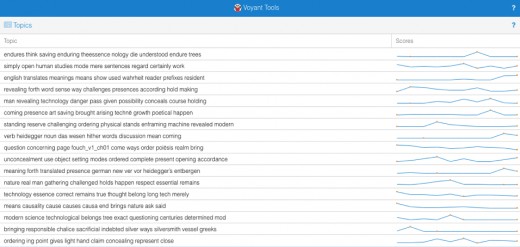
The inductive reader can clearly create numerous imaginative analyses through what Heidegger might call a sense of the essence of these words in combination, but the assumption that meaning can be gleaned from the fact that words occur together has met with a fair degree of derision. To focus on Line 4 briefly, the keywords occur the following number of times throughout the text:
revealing = 141
forth = 159
word = 284
sense = 130
way = 508
challenges = 12
presences = 70
according = 78
hold = 101
making = 44
The outlier here is the word ‘challenges’ which would seem to suggest that it holds some unique position in any meaningful relationship between these terms. This word is a translation of herausfordern which for Heidegger is a concept denoting the demand for something to reveal itself or be transformed. It is a particularly apt point of focus for our purposes in the sense that the tools of computational analysis challenge literary texts/ scholars to produce useful results, as alluded to in this essay’s introduction. The word first appears on page fifteen and is certainly conceptually linked to ‘revealing,’ ‘forth’ (in terms of calling forth), and ‘presences’ (‘the bursting open belonging to bringing forth’ 10), all words which frequently occur in proximity to ‘challenges.’ Thus, the topic model is extremely adept at reading the text and pulling together key concepts which help to reveal the meaning of others. The proximity of words on the page is a probable, if arguable, sign of their having occurred in the same thought process, what we might call the very essence of interrelation.
But what of the other words and their connection to ‘challenges’?
word = 284
sense = 130
way = 508
challenges = 12
according = 78
hold = 101
making = 44
‘Making’ is an interesting example in that it seems to have a negative relationship to ‘challenges’ and the two words appear in close proximity only once throughout the text. Indeed, challeng* is a concept largely associated with the start of the book with 50 of its 62 references occurring in the first 30 pages. ‘Making’ on the other hand occurs only 4 out of its 44 times in the section associated with ‘challenge’ and would thus lead us to believe that the holistic nature of the topic model contains weaknesses and is thereby making tenuous readings which the human analyst would not. If we lower the term count incrementally, ‘making’ is indeed the first word to disappear, and the user becomes starkly aware that the results can display much more about the internal logic of the tool’s programming than they do about Heidegger’s text. Having said this, the possibilities inherent in negative relationships should obviously not be discounted and, in fact, the occurrence of ‘making’ points the reader towards Heidegger’s assertion that ‘technology…is in no sense an instrument of man’s making or in his control. It is rather that phenomenon, ruled from out of Being itself, that is centrally determining all of Western history’ (xxix), a point not without its resonance in DH debates.
Lying somewhere between the practical knowledge of challenge as a concept related to three other key terms in the topic model, and the anti-knowledge of its questionable relationship to ‘making’ is this word realm:
[word = 284]
sense = 130
[way = 508]
challenges = 12
according = 78
hold = 101
I am going to discount ‘way’ and ‘word’ due to their ubiquity and close read how the remaining terms can help us gain a greater insight into the herausfordern area of this particular topic model, and what it says about how computers read.
(Be)Hold = memorize (xiv) + see/understand/realize (xxvi) + persist/ dominate (xxviii) + believe (xxxviii) + remain true (5) + secure (28) + keep constant (33) + deny as in withhold (44n10) + prepare (56)
‘Hold’ reveals itself to be a highly adaptable term which neatly contains directly opposing concepts of subjection and self-realization. If we then apply this slipperiness to Heidegger’s understanding of ‘challenging’ as a technological process which aims to transform naturalness into utility, we begin to get a sense that the computer’s reading might not be as easily quantifiable as some traditional humanities scholars would like to make it appear. The symbolic logic of the topic modeling’s coding though initially suspect in its cold, unitary processing, is actually performing the kind of micro analysis which, rather than exploring the etymologies of single words is in fact able to reveal an etymological network between words. The shared essence between ‘hold’ and ‘challenge,’ and thus ‘revealing,’ ‘forth’ and ‘presence,’ while not deducted by the model, is at the very least suggested by it. What is created is a Deleuzian rhizomic language community (Fig.1) which democratizes the text and works towards its synthesis and thereby its meaning.
Let us exhaust the model by addressing the two remaining terms:
‘According’ = in line with/ following (x) + in relation to (xix) + in the words of (4) + harmonious (6) + procedural/ thus (29)
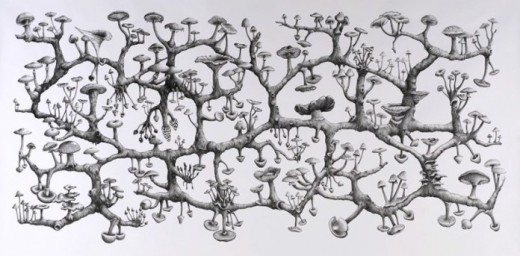
(Fig.1)
As was the case with ‘hold’, there is a sense of contradicting equality and obedience in the term ‘according,’ as well a transformative (29) movement from one state to another. While this is obviously helpful in terms of our understanding of the ‘challenge’ concept, the use of this particular word in this particular context also reveals much about the workings of Heidegger’s mind. The fact that such a procedural adverb occurs in a group of words which explore the tendency of technology to instrumentally alter the world imbues the text itself with a transformative quality indicative of the processes it describes. The model is thus highly effective at signalling towards the tendency of textuality to encode the very meanings it critiques, a self-reflexivity pointedly lacking from Heidegger’s assessment of technology. We are reminded of the argument from digital humanists that computational models often make explicit the methods by which scholars have come to their conclusions and thus hold them accountable for their findings. Furthermore, the networked logic of the topic model successfully highlights the intensely linear nature of Heidegger’s critique. It is intriguing that such organic output should be produced by the rigid lines of code required to run the analysis. Are not the transcendental propositions of the philosopher’s measured inquiry brought to mind?
Sense = way (xv) + understanding (xviii) + illogic (nonsense xviii) + detect/ feel (x)
+ state (88)
This is a crucial term for Heidegger which allows him to direct the mind of his reader to make the correct differentiation between the possible meanings of words. In it, we may have identified the link to ‘making’ as something you do of sense, but more important to our theme is the obscurity between reason and feeling which this word is able to contain. In my view, a tool such as topic modeling inhabits this space as something which can give us the sense of a text. It may be programmed within the strictures of symbolic logic, but this encoding is carried out inductively with distinctly human-oriented ends in mind. Heidegger might describe it thus: ‘The methodology, characterized by entrapping securing, that belongs to all theory of the real is a reckoning-up. We should not, of course, understand this term in the narrow sense of performing an operation with numbers. To reckon, in the broad, essential sense, means: to reckon with something, i.e., to take it into account; to reckon on something, i.e., to set it up as an object of expectation’ (170). Although a computer cannot read in terms of defining how the language of a text is indicative of any worldly state, neither is it ‘performing a [mere] operation with numbers.’ We might say that a computer can half-read in that it can replicate the analysis and presentation of physical information without necessarily moving on to interpretation. Having said this, there is a very real sense in which we can say that such interpretation is suggested by the machine and its inability to express it is merely reflective of the shortcomings of technology/ programmer. The above close reading of the computer’s reading would suggest that the networks of thought implied by a tool such as topic modeling may be extremely elucidatory of the workings of the mind of the author. May we say then that the worldly exchange set out in this essay’s opening is in effect?
What we are getting is a sense of how words behave in the world of the text, how words inform and elucidate each other, and thus how the author goes about applying his own linguistic concepts. Further, if the way we deploy language is a window upon the workings of our (sub)conscious, topic modeling may go so far as drawing a map of all the little worlds which make up the universe of an author’s Being. In the above example, we are not left to wonder on what Heidegger means by ‘challenge’ as a concept in isolation, but are directed towards other concepts, linguistic structures and even feelings which he has imbued in this idea and which are simultaneously activated whenever it is referred to. Thus, a sense of worldliness is created in that the experiential nature of networked thought processes, informed by both environmental triggering of certain word-choices (presence) and carefully constructed ideas (experience), is made to shimmer into view via the tool (revelation/ futurity). There are at least two main arguments against this view which are not easily refuted.
Firstly, the possibility that the reader is not, in fact, accessing the author’s world but only that of the text is a distinct possibility. Previously, we had drawn attention to the fact that machine analysis is perhaps not suitable for literary interpretation in that the coding language can only ever be inherently reflective of its own internal logic. While it was suggested that traditional language attempts to render external reality and certainly allows for much greater flexibility of expression than its computational counterpart, it cannot be denied that something of experience is quelled through linguistic encoding practices. The use of a philosophical tract for this essay’s purposes was conducive to its arguments, but we are left to wonder how difficult it would be to make a similar case with a work of fiction or poetry as object. It seems likely that the analysis of word clusters would prove less fruitful for genre or styles which do not unravel in a procedural fashion, and that the disparities of such a mediatic extrapolation, though certainly useful at moments of authorial intervention, might prove too great when applied to the vagaries of character or poetics, particularly in their more experimental forms. Digital analysis is not of course excluded to topic modeling or similar mining practices carried out in tools such as Voyant which remain more reflective of technology’s capabilities than literature’s needs. Over the coming years, Brown’s desire for scholars to be involved in the building of analytical tools will reveal whether or not computers are fundamentally limited by the strictures of symbolic logic.
The second issue is that of the position of the reader and the idea of inductive interpretation. We ought to wonder whether the computer is in fact doing too much and thus excluding the possibility of the two-way knowledge exchange posited earlier in this piece. To intervene at the level of textual pattern analysis creates a disconnect between reader and text/ author which distances the work from the environment of its reception. The effect is that the context of the work’s creation, a critical natural aspect of its worldliness, does not come into direct contact with that of the reader at the moment of interpretative revelation. While Heidegger’s network of consciousness is suggested by Line 4 of Voyant’s topic model of Questions Concerning Technology, the fact that the original links are not identified by a reader and their sensory, imaginative and environmental presence creates a disconnect which is indicative of technology’s tendency to disentangle people from history and media as realms bound up in the world. While the implication of scholars in building new computational models may be able to bridge the gap between the humanities and computer science, I wonder whether they will be able to narrow the chasm between technology and the world.
In a Quora forum responding to the question, ‘How can computers read code?’, one respondent explains that ‘the bits in the opcode (the “code”) set gates (things that allow or disallow the flow of electricity) in the CPU, so that a particular code does a particular thing.’ Is it any wonder then, when the processor is modelled on the functioning of neuronal networks and the code emanates from a programmer’s mind, that computers should end up making what look like distinctly human readings? On first encountering the likes of Susan Brown who vaunt the unique nature of computational literary analysis, I wondered whether they had mistaken representation for revelation. Much was seeming to be made of the kind of analyses which mirrored what literary scholars had already been carrying out for centuries, as if the machines were somehow acting independently. It is of course all just a matter of scale; the computer model must emanate from the human mind and will always mirror it in some fundamental way, even as it infinitely multiplies its efficiency. The difference lies in the limits of our sensory materiality, both in terms of how it simultaneously pales in comparison to and far outstrips computational capacity.
Works Consulted
Berg, Maggie & Seeber, Barbara. The Slow Professor: Challenging the Culture of Speed in the Academy. UoT Press. 2016.
Birkerts, Sven. “Reading in a Digital Age: Notes on why the Novel and the Internet are Opposites, and why the Latter both Undermines the Former and Makes it More Necessary.” The American Scholar, 79.2. Spring 2010. 32-44.
Brown, Susan. “Don’t Mind the Gap: Evolving Digital Modes of Scholarly Production across the Digital-Humanities Divide.” Project, the Orlando. 2012. https://www.researchgate.net/publication/297371369_Don't_mind_the_gap_Evolving_digital_modes_of_scholarly_production_across_the_digital-humanities_divide
Donne, John. The Variorum Edition of the Poetry of John Donne (Book 7). Indiana UP, 2005.
Drucker, Johanna, and Bethany Nowviskie. “Speculative Computing: Aesthetic Provocations in Humanities Computing.” A Companion to Digital Humanities. Ed. Susan Schreibman, Ray Siemens, and John Unsworth. Oxford: Blackwell, 2004. Web. 19 June 2019.
Heidegger, Heidegger, Martin. The Question Concerning Technology, and Other Essays. New York: Harper & Row, 1977.
Klein, Al. “How can computer’s read code?” Quora, 17 January 2017. https://www.quora.com/How-can-computers-read-code
Love, Jessica. “Reading Fast and Slow.” The American Scholar. 3 June 2019. https://theamericanscholar.org/reading-fast-and-slow/
Niedermeyer, Jason. “Maybe Aesop was Right, the Tortoise does Win: A Natural History of the Slow Reading Movement.” Advances in Language and Literary Study. 8.3, June 2017. 72-81
Saenger, Paul. Space Between Words: The Origins of Silent Reading. Stanford UP, 1997.
Tsvetkova, Milena. “The Speed Reading is in Disrepute: Advantages of Slow Reading for the Information Equilibrium.” European Journal of Contemporary Education, 6.3. 2017. 593-604.
© 2019 John Cairns

